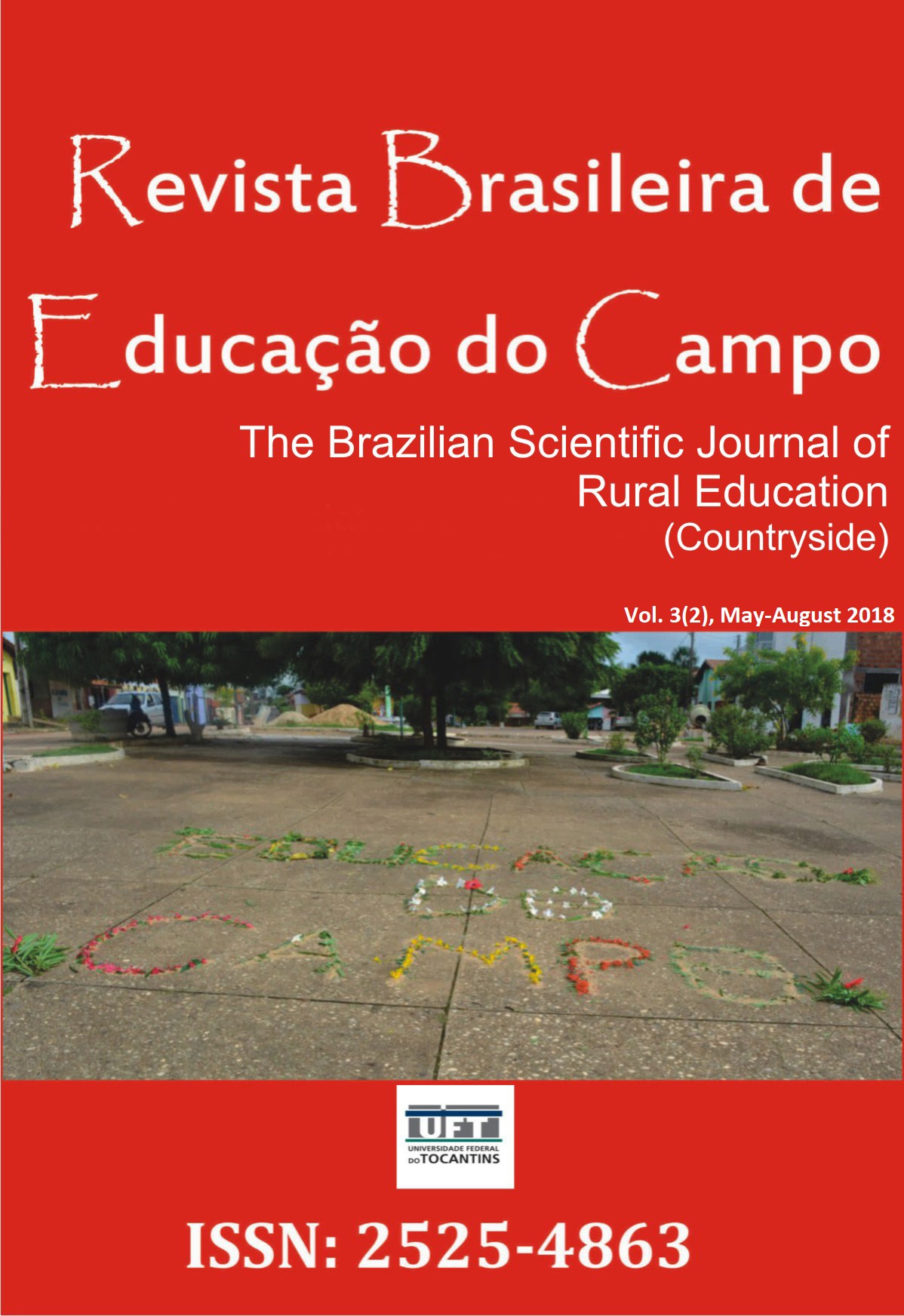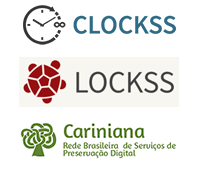Physics teaching for the countryside population of Tocantins: challenges and problems to be overcome
DOI:
https://doi.org/10.20873/uft.2525-4863.2018v3n2p359Abstract
ABSTRACT. The State of Tocantins is the newest State of the federation and was created with the promulgation of the Constitution of the Federative Republic in 1988. After 29 years of existence, it serves 408,322 students with 11% of these enrolled in educational institutions in the field. The objective of the present article is to present a detailed analysis of how the State rural school structure is found in the eight regions of Tocantins, focusing on the quantitative of students with access to Science education, specifically Physics. The study of this science is associated to the differentiated construction of world view and also to the development of the critical census, that is, representation, communication, investigation, understanding and socio-cultural contextualization. Methodologically the information dispersed in official documents was condensed, reorganized, plotted and described quantitatively. Comparing the total number of students in the state and the percentage of country students who are in the year in which physics classes are taught, it has been verified that there are 10 times more students studying this science in urban areas. The majority of the rural population does not have guaranteed access to the Physics teaching in the localities in which it resides, producing an unfavorable scenario.
Downloads
Literaturhinweise
Aksenen, E. Z, & Miguel, M. E. B. (2015). A Educação Rural à Luz da Legislação Brasileira: 1927 a 1971. Revista Diálogo Educacional., 15(46), 703-722. DOI: http://dx.doi.org/10.7213/dialogo.educ.15.046.DS05
Barreiro, I. M. F. (2006). Articulação entre Desenvolvimento Econômico e Educação aos Países Latinos: Educação Rural no Brasil-Anos Cinquenta. Proj. História, (32), 123-142. Recuperado de: https://revistas.pucsp.br/index.php/revph/article/view/2420/1510
Brasil. (1996). Lei de Diretrizes e Bases da Educação Nacional (LDB), Lei nº 9.394, de 20 de dezembro de 1996. Recuperado de: https://ufsj.edu.br/portal2-repositorio/File/proen/ldb_11ed.pdf
Brasil. (1998). Parâmetros Curriculares Nacionais (PCNs). Ensino Médio. Parte III - Ciências da Natureza, Matemática e suas Tecnologias. Brasília, DF: MEC/SEF. Recuperado de: http://portal.mec.gov.br/seb/arquivos/pdf/livro01.pdf
Brasil. (2010a). Instituto brasileiro de Geografia e Estatística (IBGE), Censo Demográfico, 2010. Recuperado de: http://www.ibge.gov.br/home/estatistica/populacao/censo2010/default.shtm
Brasil. (2010b). CONAE - Conferência Nacional de Educação. Construindo o Sistema Nacional Articulado de Educação: o Plano Nacional de Educação, Diretrizes e Estratégias de Ação. Documento Final. Brasília, DF: Imprensa Oficial. Recuperado de: http://conae.mec.gov.br/images/stories/pdf/pdf/documetos/documento_final_sl.pdf
Calazans, M. J. C. (1993). Para Compreender a Educação do Estado no Meio Rural. In Damasceno, M, & Therrien, J. (org.). Educação e escola no campo. 1-7. Campinas, SP: Papirus. Recuperado de: https://pt.scribd.com/document/281441666/1-CALAZANs-Para-Compreender-a-Educacao-Do-Estado-No-Meio-Rural-1
Etchebéhère Júnior, L., & Barros, S. S. (2009). Projetos de Valorização do Ensino Rural e as Políticas Públicas. Pesquisa em Debate, edição especial, 1-15.
Nunes, R. B. (2014). Realidade Escolar dos Alunos do Meio Rural do Município de Dom Feliciano/RS. X ANPED SUL, Florianópolis, SC.
Oliveira, M. C. P. (2013). Educação do Campo: Concepção, Contribuições e Contradições. Revista Espaço Acadêmico. 12(140), 43-52.
Rangel, M.; & Carmo, R. B. (2011). Da Educação Rural à Educação do Campo: Revisão Crítica. Revista da FAEEBA – Educação e Contemporaneidade 20(36), 205-214. Recuperado de: https://www.revistas.uneb.br/index.php/faeeba/article/view/311/261
Rede Peteca. (2017). Trabalho de Crianças no Campo Cresce e Preocupa, Mostra Estudo da Abrinq. Recuperado de: http://www.chegadetrabalhoinfantil.org.br/noticias/materias/trabalho-de-criancas-no-campo-cresce-e-preocupa/
Ribeiro, C. J. (1985). História de Uma Escola para o Povo: Projeto João-de-Barro-Maranhão. São Luís, MA: UFMA. Recuperado de: http://bibliotecadigital.fgv.br/dspace/handle/10438/9408
Rosa, D. S., & Caetano, M. R. (2008). Da educação rural à educação do campo: uma trajetória... Seus desafios e suas perspectivas. COLÓQUIO – Revista Científica da Faccat, 6(1-2), 21-34.
Tocantins. (2015). Plano Estadual de Educação do Tocantins. Lei nº 2.977, de 08 de julho de 2015, publicada no diário oficial nº 4.411. Palmas, TO. Recuperado de: www.al.to.leg.br/arquivo/38073
Tocantins. (2016a). Censo Escolar 2015. Fornecido pela Secretaria Estadual de Educação e Cultura do Estado do Tocantins. Palmas, TO.
Tocantins. (2016b). 2016-2019. Secretaria do Planejamento e Orçamento. Palmas, TO. Recuperado de: http://ppa.seplan.to.gov.br/site
Veröffentlicht
Zitationsvorschlag
Ausgabe
Rubrik
Lizenz
Creative Commons Attribution License
Creative Commons Attribution License
Proposal for Copyright Notice Creative Commons
1. Policy Proposal to Open Access Journals
Authors who publish with this journal agree to the following terms:
A. Authors retain copyright and grant the journal right of first publication with the work simultaneously licensed under the Creative Commons Attribution License that allows sharing the work with recognition of its initial publication in this journal.
B. Authors are able to take on additional contracts separately, non-exclusive distribution of the version of the paper published in this journal (ex .: publish in institutional repository or as a book), with an acknowledgment of its initial publication in this journal.
C. Authors are permitted and encouraged to post their work online (eg .: in institutional repositories or on their website) at any point before or during the editorial process, as it can lead to productive exchanges, as well as increase the impact and the citation of published work (See the Effect of Open Access).














